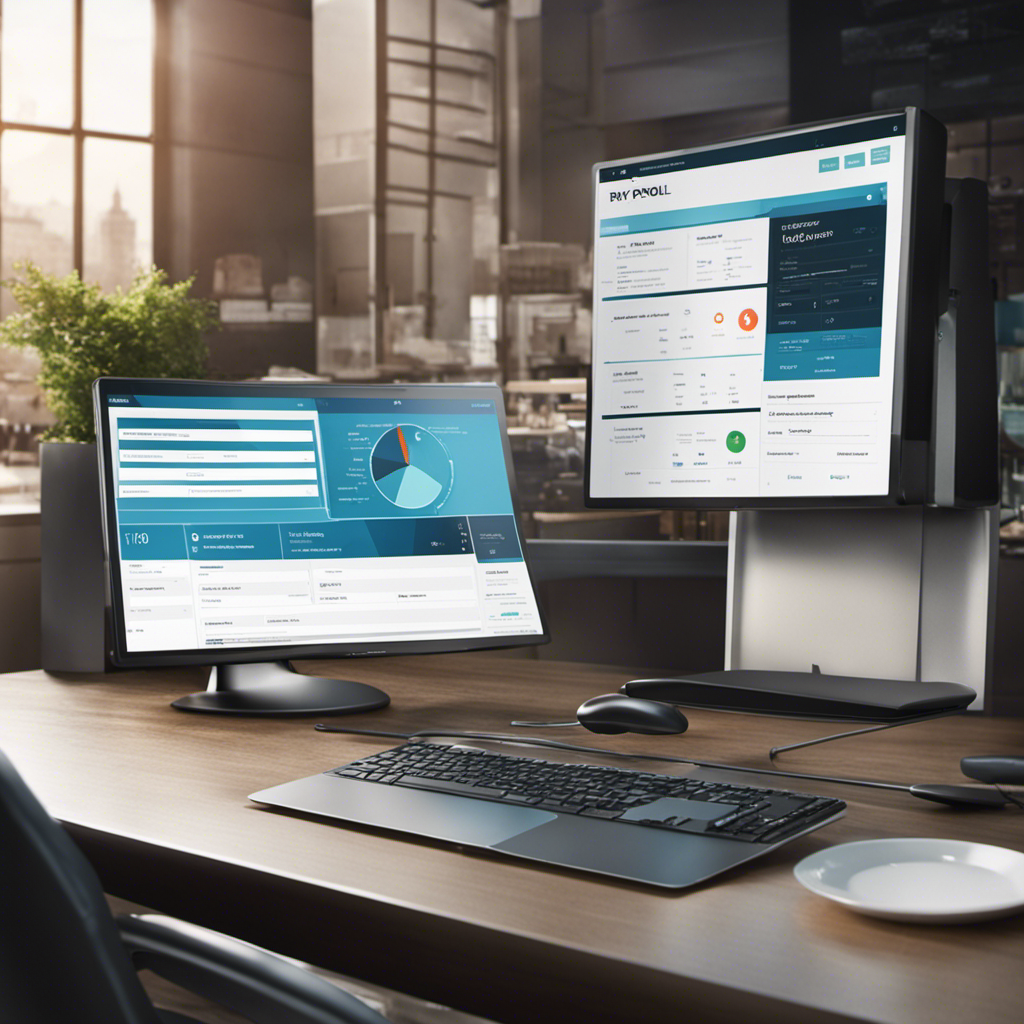In today’s fast-paced business environment, selecting the right payroll system is crucial to ensure seamless and efficient operations.
With the constant advancements in technology, it is essential to find a system that not only meets your immediate needs but also offers innovative features to adapt to future requirements.
This article provides a comprehensive analysis of the key factors to consider when choosing a new payroll system, empowering you to make an informed decision that fosters innovation and drives success in your organization.
Key Takeaways
- Ease of use and user-friendly interface
- Advanced payroll features and functionality
- Customization and scalability options
- Integration with other systems and software
Ease of Use and User-Friendly Interface
How can a payroll system be designed to be easy to use and have a user-friendly interface?
When considering a new payroll system, it is essential to prioritize ease of use and a user-friendly interface. A well-designed system should integrate seamlessly with existing software and systems, allowing for efficient data transfer and eliminating the need for manual data entry. Integration capabilities enable the payroll system to communicate with other HR systems, such as time and attendance or employee benefits platforms, streamlining processes and reducing errors.
Furthermore, a user-friendly interface should provide clear and intuitive navigation, making it easy for users to access and input information. Reporting capabilities are also crucial, allowing businesses to generate accurate and comprehensive reports for management and compliance purposes.
Advanced Payroll Features and Functionality
When considering a new payroll system, businesses should prioritize advanced payroll features and functionality to optimize their payroll processes and improve overall efficiency. Advanced reporting capabilities are crucial for businesses to gain insights into their payroll data and make informed decisions. These capabilities allow businesses to generate customized reports, track employee expenses, and analyze payroll trends. Additionally, compliance with local tax laws is essential to ensure accurate and timely tax filings. A payroll system with built-in compliance features can automatically calculate and deduct the correct amount of taxes, reducing the risk of errors and penalties. By investing in a payroll system that offers advanced features and functionality, businesses can streamline their payroll processes, save time, and ultimately improve their bottom line.
| Key Features | Benefits | Emotional Response |
|---|---|---|
| Advanced reporting capabilities | Gain insights and make informed decisions | Excitement |
| Compliance with local tax laws | Avoid errors and penalties | Relief |
| Streamlined payroll process | Save time and improve efficiency | Satisfaction |
Customization and Scalability Options
Businesses should also consider the customization and scalability options when choosing a new payroll system to further enhance their payroll processes and accommodate their evolving needs.
Customization options allow businesses to tailor the payroll system to their specific requirements, ensuring that it meets their unique needs and preferences. This includes the ability to add or remove features, customize reports, and integrate with other systems.
Additionally, businesses should look for scalability options in a payroll system to ensure that it can grow alongside their organization. Scalability allows businesses to easily add or remove users, expand into new locations, and handle increasing volumes of payroll data.
Integration With Other Systems and Software
To ensure seamless operations and maximize efficiency, a new payroll system should seamlessly integrate with other systems and software used within the organization. Integration with other systems allows for the exchange of data and information, eliminating the need for manual data entry and reducing the chances of errors. This integration can also streamline processes, such as employee onboarding and benefits administration, by automatically syncing data between different platforms.
When evaluating a new payroll system, it is crucial to consider its compatibility with existing software and systems. Additionally, organizations should prioritize data security measures to protect sensitive employee information. This includes encryption, access controls, and regular data backups.
Lastly, a cost effectiveness and ROI analysis should be conducted to ensure that the integration of the new payroll system with other systems and software brings value to the organization and justifies the investment.
Reliable Customer Support and Training Resources
A new payroll system should provide reliable customer support and comprehensive training resources to assist users.
When considering a new payroll system, it is important to ensure that the vendor offers prompt and effective customer support. Users should have access to a dedicated support team that can address any issues or questions that may arise.
Additionally, the system should provide thorough training resources to help users navigate the software and maximize its capabilities. This could include video tutorials, user guides, and online forums where users can connect with other users and share best practices.
The onboarding process should be smooth and efficient, with clear instructions and guidance provided to new users. Troubleshooting tips should also be readily available to help users resolve any technical issues they may encounter.
Reliable customer support and training resources are essential elements of a new payroll system to ensure a positive user experience and successful implementation.
Frequently Asked Questions
How Long Does It Typically Take to Implement a New Payroll System?
The implementation timeline for a new payroll system can vary depending on the complexity of the organization’s payroll processes and the level of customization required. Potential challenges include data migration, system configuration, and user training.
Can the Payroll System Handle Different Types of Employee Compensation, Such as Commissions and Bonuses?
When considering a new payroll system, it is essential to evaluate whether it can handle different types of employee compensation, such as commissions and bonuses. Integration with HR software and scalability for company growth are also important factors to consider.
Does the Payroll System Support Multiple Pay Frequencies, Such as Weekly, Bi-Weekly, or Monthly?
When considering a new payroll system, it is crucial to assess whether it supports multiple pay frequencies, such as weekly, bi-weekly, or monthly. This feature enables efficient payroll system integration and automation, enhancing overall operational effectiveness and time management.
Can the Payroll System Generate Detailed Reports for Tax Filing Purposes?
When considering a new payroll system, it is crucial to evaluate its ability to generate detailed reports for tax filing purposes. This feature enhances payroll system integration and cost effectiveness, ensuring compliance and efficient financial management.
Is the Payroll System Compliant With All Relevant Labor Laws and Regulations?
When evaluating a new payroll system, it is crucial to ensure compliance with labor laws and regulations. Additionally, pay attention to features such as payroll system integration and automation to achieve innovation and efficiency in payroll management.






